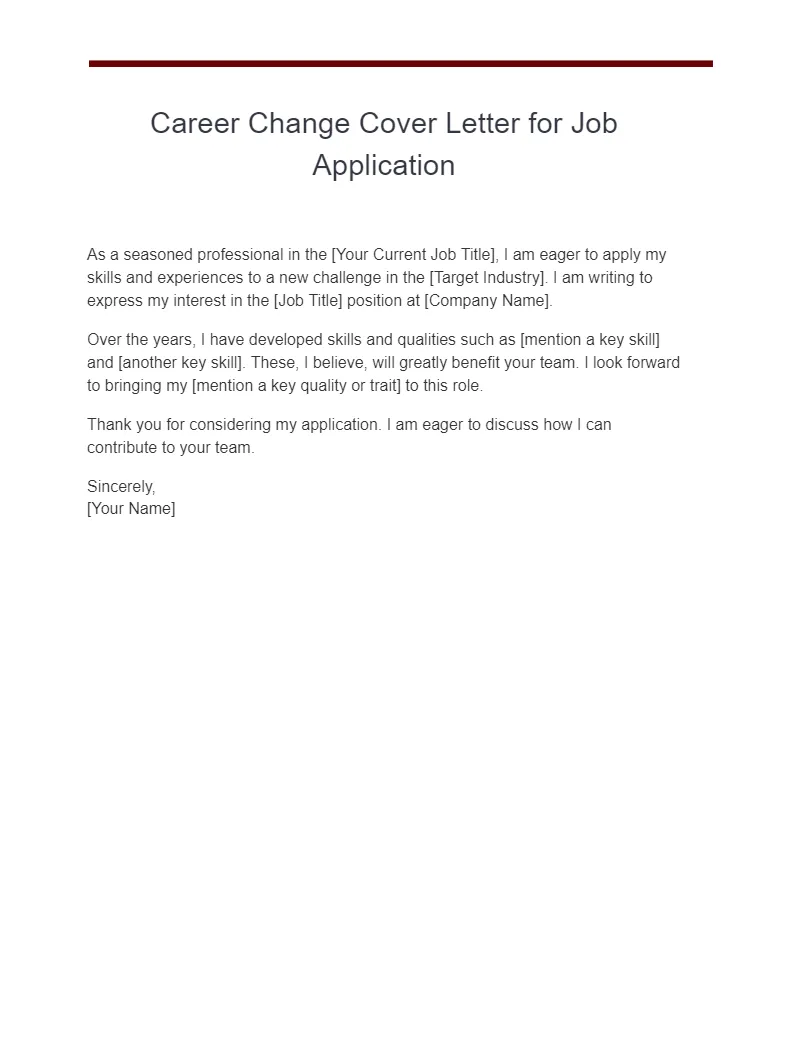Understanding the Importance of a Career Change Cover Letter
A career change cover letter is more than just a formality; it’s your opportunity to tell a compelling story. Unlike a resume, which provides a chronological overview of your experience, the cover letter allows you to address the elephant in the room—the career shift itself. It’s your chance to explain why you’re making this change, what motivates you, and how your existing skills make you a strong candidate, even without direct experience in the new field. In the context of career transitions, a cover letter can be the deciding factor in whether a hiring manager takes a deeper look at your application. A well-crafted letter can make you stand out, demonstrating your proactive approach and genuine interest in the position. It also gives you space to show your understanding of the company and the role, and to demonstrate that you have the necessary skills to succeed.
Highlighting Transferable Skills
One of the most important aspects of a career change cover letter is the ability to highlight your transferable skills. These are the skills you’ve gained in previous roles that are relevant to the new position, even if the industries or job titles are different. Employers are not just looking for a perfect match in experience; they want to see how your skills and experiences align with the requirements of the role. This is where you bridge the gap between your past and your future. Focus on the core competencies that are valued by the target industry and the specific job you are applying for. This includes things like communication, problem-solving, leadership, teamwork, and project management, depending on the nature of the role. It’s about showing how your past experience, while seemingly unrelated, has equipped you with a set of skills that are valuable to the new role.
Identify Your Core Skills
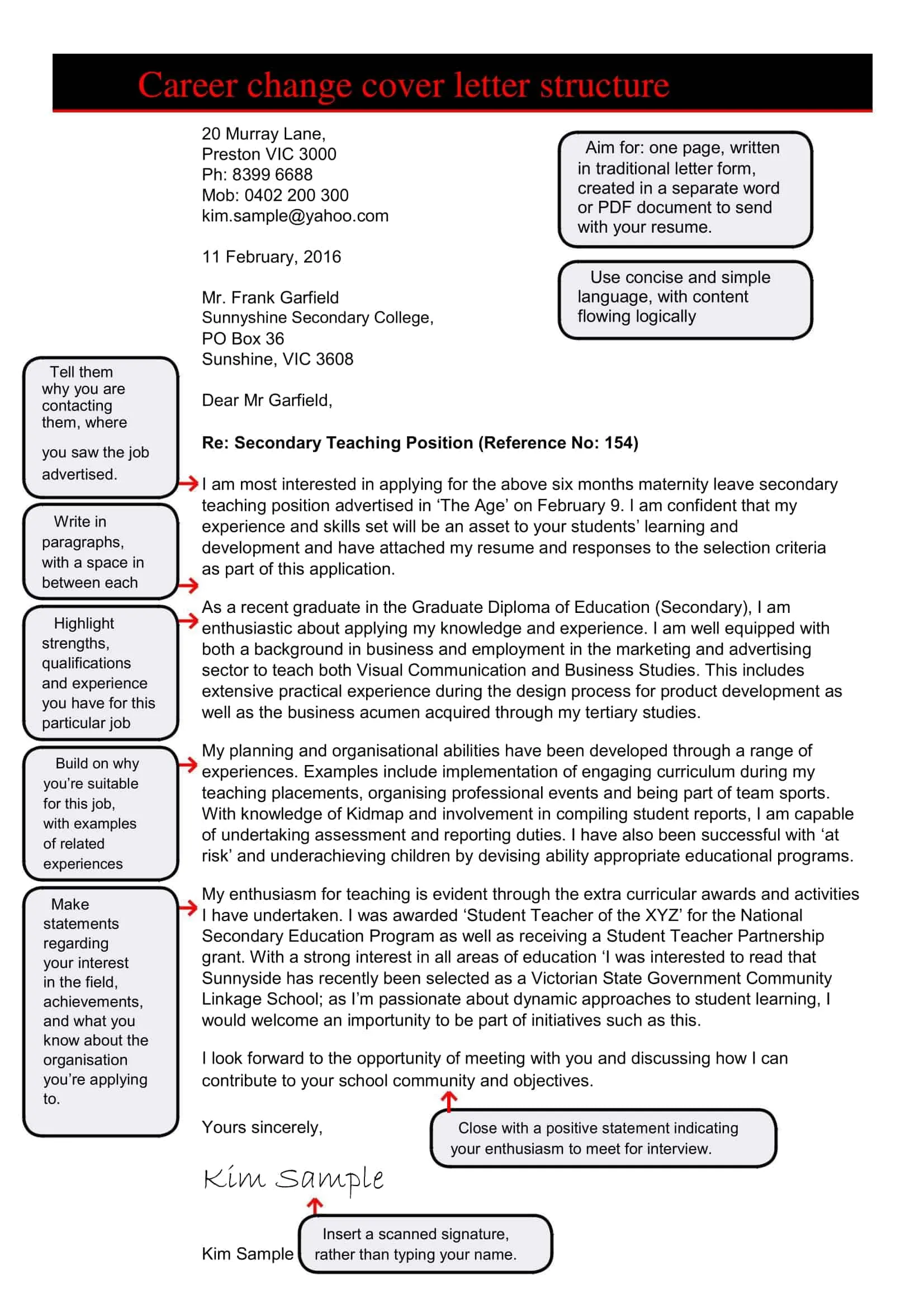
Begin by identifying your core skills. Think about all the tasks, projects, and responsibilities you’ve handled in your previous roles. What skills did you use in these experiences? Make a comprehensive list, and categorize them into different skill types. Consider skills that are both hard (technical skills) and soft (interpersonal skills). Examples of hard skills include data analysis, coding, or specific software proficiency. Soft skills could include communication, leadership, and time management. Once you have a list, you can match these skills to the job description, highlighting those that align with the role’s requirements. This process will help you create a compelling cover letter that focuses on the relevant skills and demonstrates that you are well-prepared for the role.
Provide Evidence With Examples
Simply listing your skills isn’t enough; you need to provide concrete examples to support your claims. This is where you demonstrate the impact of your skills in real-world situations. Use the STAR method (Situation, Task, Action, Result) to structure your examples. Start by describing the situation, outline the task you needed to complete, then detail the actions you took, and finally, highlight the results of your efforts. For example, if you want to showcase your communication skills, describe a situation where you had to explain a complex concept to a diverse audience. The task might be leading a project, action might be preparing a presentation, and results could be a successful outcome. Make the examples specific and relevant. This approach allows hiring managers to understand how you’ve used your skills effectively in the past and can anticipate how you might perform in the new role.
Emphasizing Your Passion and Motivation
A career change cover letter is a chance to demonstrate your passion for the new field and your motivation to succeed. This is especially important when transitioning to a new industry, as employers want to know why you’re choosing to make this change. This section of the cover letter is your opportunity to explain your career goals and to show what drives you. The more genuine and enthusiastic you sound, the more likely a hiring manager will give you consideration. Your passion can compensate for a lack of direct experience. Remember, if you can demonstrate a genuine enthusiasm for the new role, you can make a strong case that you will be a valuable asset.
Show Your Enthusiasm
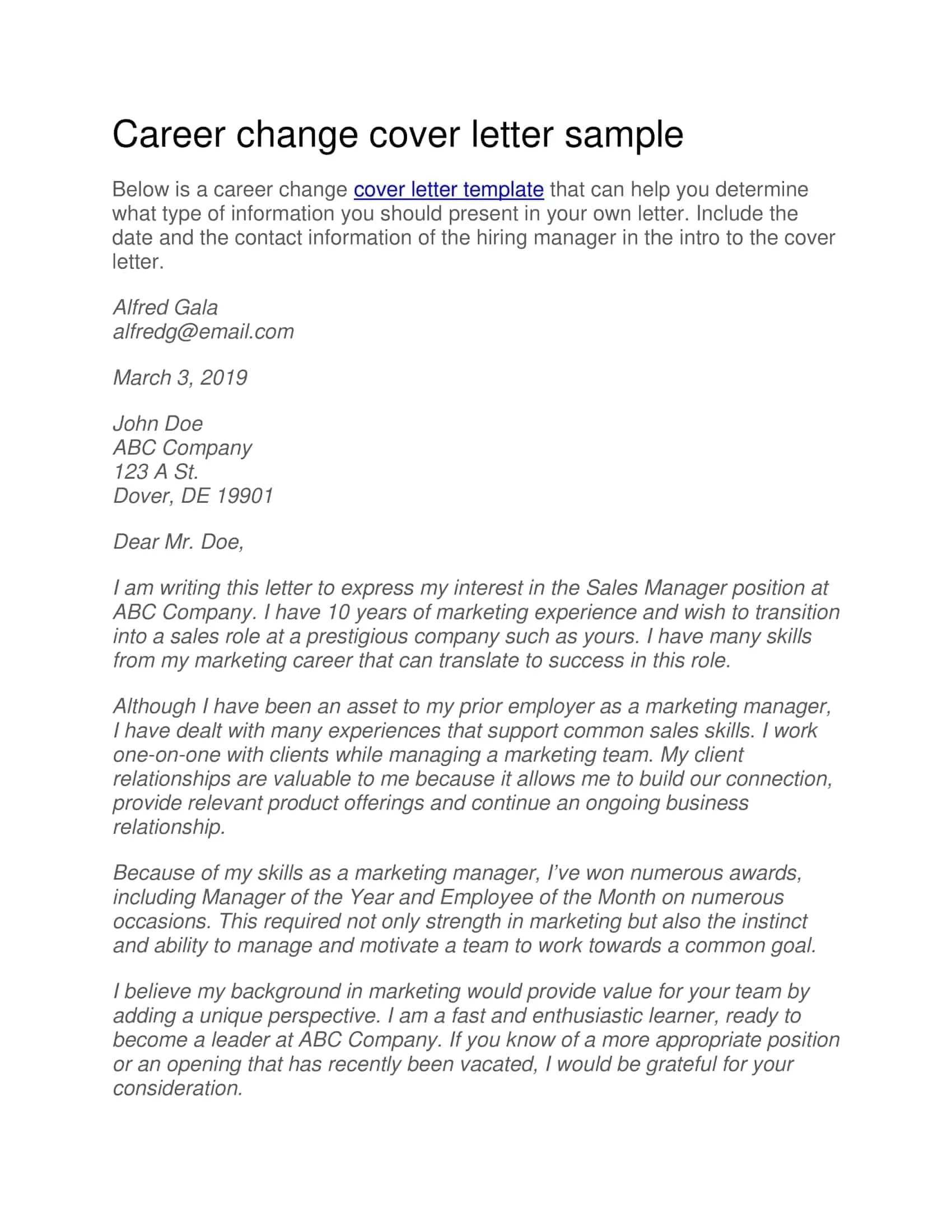
Enthusiasm is infectious, so let your excitement for the new role shine through. Explain why you’re attracted to the new field or company. Did a specific project or experience spark your interest? Do you admire the company’s mission or values? Conveying your enthusiasm helps to reassure the hiring manager that you’re genuinely interested in the position. Use strong, positive language, but avoid clichés or overly dramatic statements. Be specific about what excites you, and how the opportunity aligns with your long-term career goals. Your enthusiasm should be about what motivates you in the new direction and makes you committed to the role. Being genuinely enthusiastic will help you stand out.
Demonstrate Genuine Interest
Demonstrate that your interest extends beyond just wanting a new job. Show that you’ve researched the company, the industry, and the specific role. Understand the company’s mission, values, and recent achievements, and tailor your letter to align with these. Reference specific projects, products, or initiatives that resonate with you. By doing so, you demonstrate that you are genuinely interested in the opportunity and invested in the company’s success. This also lets the hiring manager know that you understand what the job entails. A little research goes a long way; it shows the hiring manager that you are not just applying for any job, but that you’ve put thought into this specific opportunity.
Showcasing Your Research and Knowledge
Your cover letter should demonstrate that you’ve done your homework, and that you have more than a passing interest in the company and position. This means showing a clear understanding of the company’s goals and values, as well as the specific requirements of the role. This will help you stand out, and show the hiring manager that you’re serious about your application.
Research the Company and Position
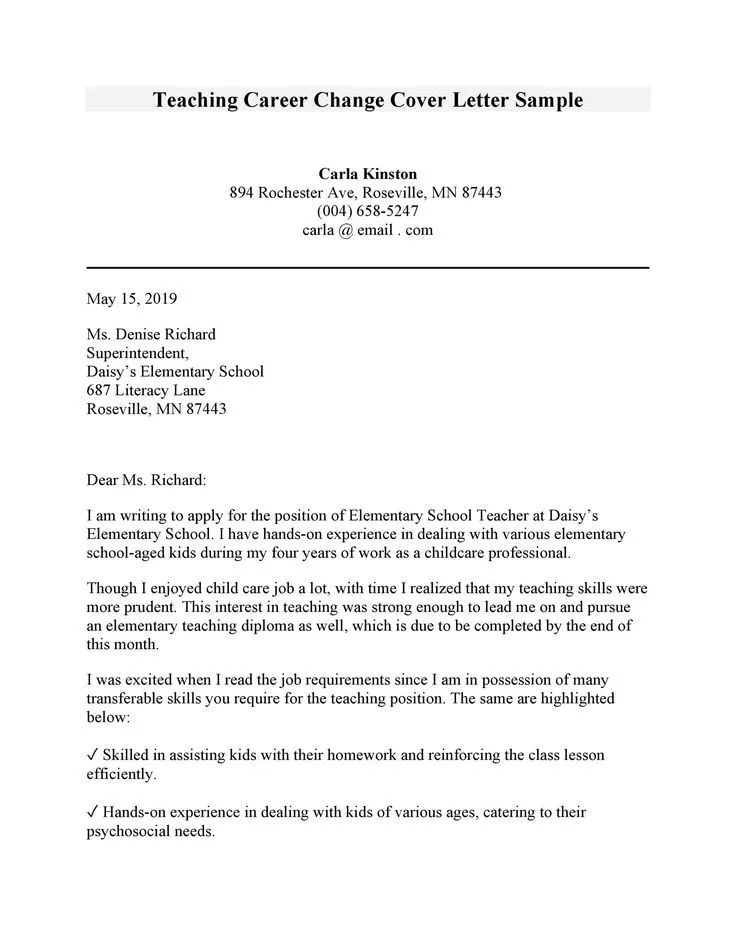
Thorough research is crucial to writing an effective cover letter. Start by researching the company’s mission, values, and recent news. What are their current projects? Who are their competitors? What are their strengths and weaknesses? Visit the company’s website, read industry publications, and browse social media. This information will help you to tailor your letter and to show that you understand the company’s culture and goals. Next, analyze the job description carefully. Identify the key responsibilities and skills required. Think about how your experience and skills align with these requirements, and highlight those points in your letter. Your research should guide you in crafting a targeted letter that speaks directly to the company’s needs and expectations.
Tailor Your Letter to the Role
A generic cover letter will not make a good impression, especially when you’re making a career change. Tailor each letter to the specific job you’re applying for. Review the job description carefully, and identify the key requirements and skills the employer is seeking. Then, use your cover letter to demonstrate how your skills and experience align with those requirements. Use the language and keywords from the job description. This shows that you understand the needs of the role. It is more effective to focus on the aspects of your experience that are most relevant to the position. Demonstrate your understanding of the company and the role, highlighting how your background will benefit the organization. By doing so, you will increase your chances of making a strong impression.
Formatting and Structure Essentials
Proper formatting and structure are key to ensuring your cover letter is easy to read. This is particularly important when you are trying to make a career change, because it will give you extra credibility. A well-formatted cover letter also shows attention to detail and professionalism. Your cover letter should be clear and concise and make it easy for the hiring manager to find the information they need.
Header and Contact Information
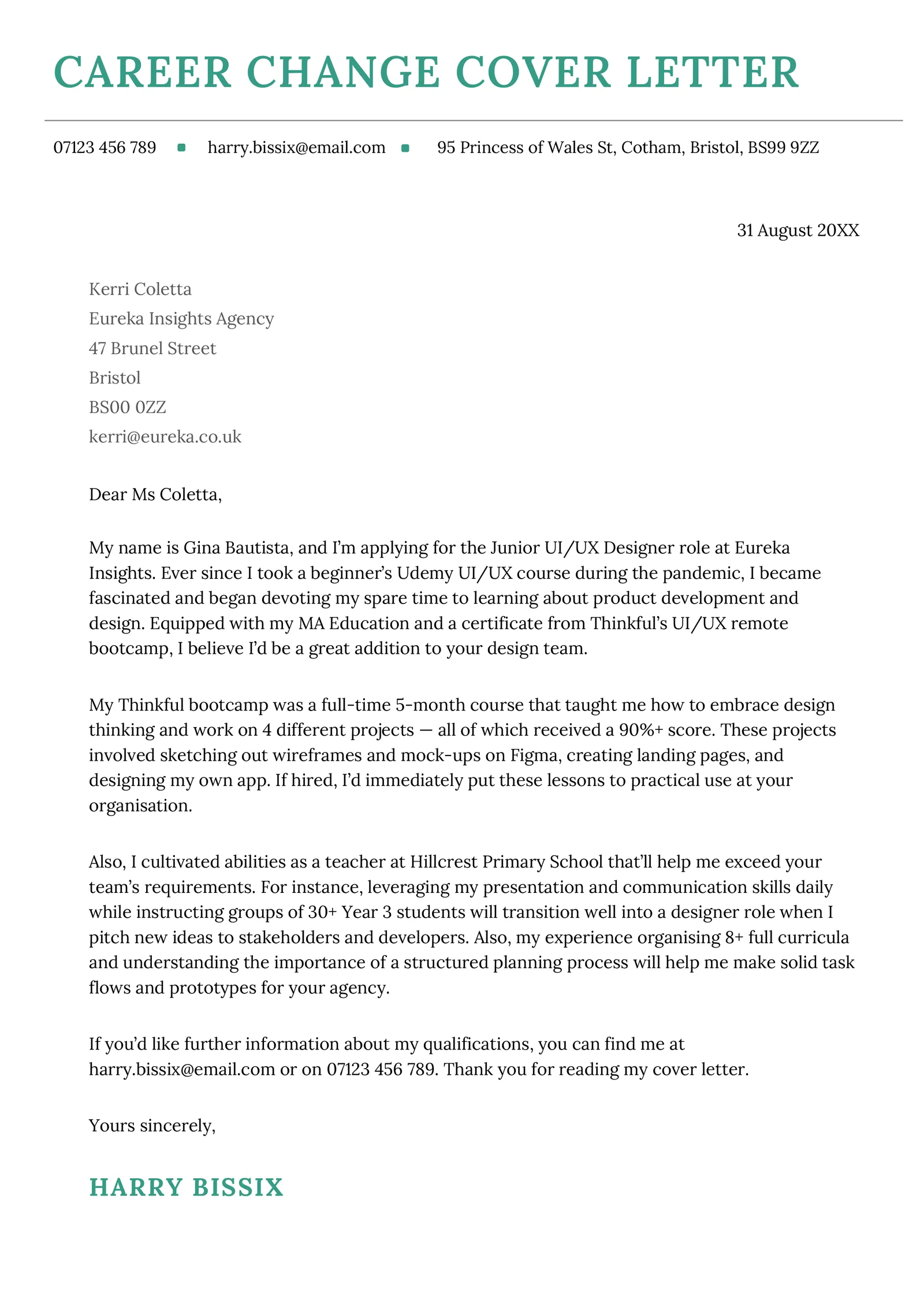
Start with a professional header that includes your name, contact information (phone number, email address, and possibly your LinkedIn profile URL), and the date. Also include the hiring manager’s name, title, and the company’s address (if available). Make sure your contact information is current and professional. Your email address should be professional; avoid using nicknames or informal email addresses. Ensure that your phone number is correct and that your voicemail greeting is professional. Your header should be clean and easy to read, as it is a critical part of the formatting of your cover letter.
Body Paragraphs and Tone
Structure your cover letter into three to four concise paragraphs. The first paragraph should state the position you are applying for and how you learned about the opportunity. The second paragraph should highlight your transferable skills and provide specific examples. The third paragraph should demonstrate your passion for the role and your knowledge of the company. The fourth paragraph should summarize your key qualifications and reiterate your interest in the position. Maintain a professional, yet enthusiastic tone. Avoid sounding overly formal or stiff; instead, write in a clear, confident style. Use active voice and strong verbs. Proofread the letter to eliminate any grammatical errors or typos. Choose a font that is easy to read, such as Arial or Times New Roman, and use a consistent font size. By following these guidelines, you’ll be sure your cover letter is easy to read and presents your skills in the best possible light.
Proofreading and Editing
Before submitting your cover letter, thoroughly proofread and edit it. Errors in grammar, spelling, or punctuation can undermine your credibility. Read the letter multiple times, and consider asking a friend or family member to review it. Pay close attention to the following: grammar, spelling, punctuation, sentence structure, and the flow of ideas. Make sure your letter is free of typos and that your writing is clear and concise. Ensure the letter is tailored to the specific role. A polished cover letter shows attention to detail and professionalism. Take the time to review your cover letter to be sure that you leave a positive impression.
Call to Action and Closing

Conclude your cover letter with a strong call to action and a professional closing. The call to action should express your eagerness to learn more about the opportunity and to discuss your qualifications in an interview. Thank the hiring manager for their time and consideration. End with a professional closing such as “Sincerely,” “Respectfully,” or “Best regards,” followed by your full name. Avoid generic or casual closings. If you are applying via email, you can include your contact information again below your closing. The call to action is a critical part of your cover letter, as it encourages the hiring manager to take the next step and consider your application further. Ensure you end your letter with a call to action.
